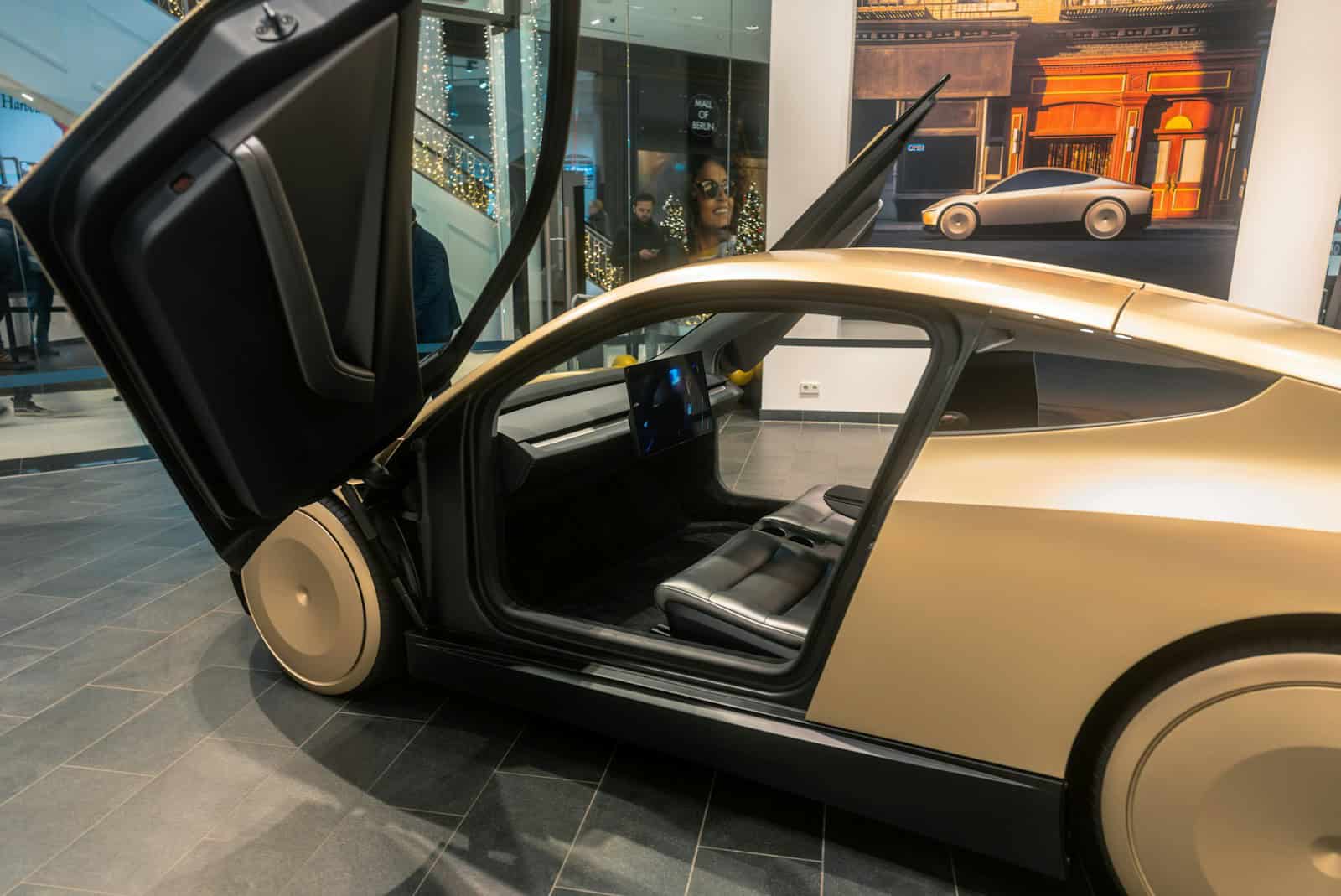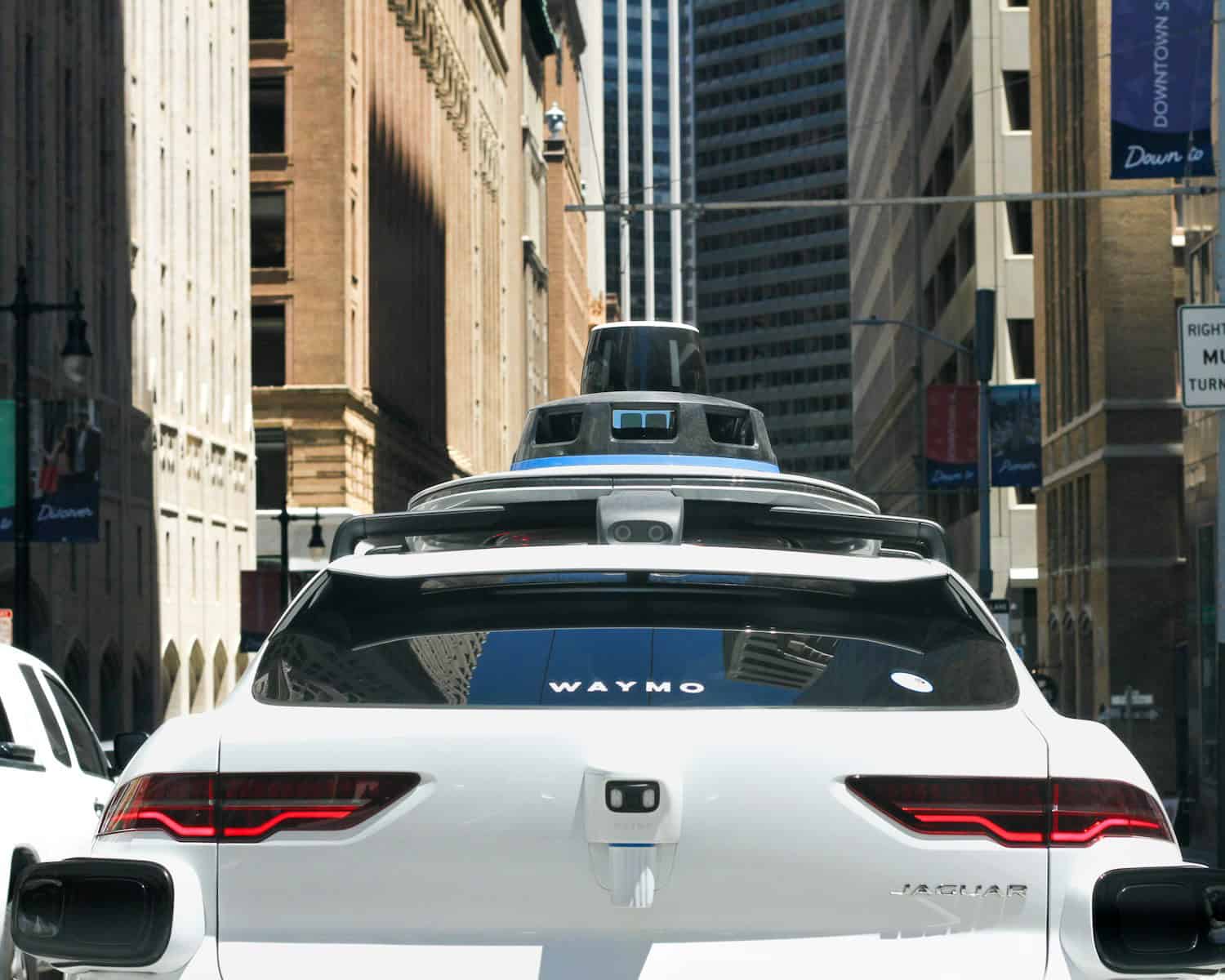Self-driving cars are no longer just a futuristic fantasy—they’re inching closer to reality, with 2025 shaping up to be a pivotal year in the race toward autonomy. From Tesla’s aggressive robotaxi rollout to Waymo’s expanding commercial services and bold new entrants in Europe and the Middle East, the autonomous vehicle (AV) landscape is evolving rapidly.
While fully driverless consumer cars remain just out of reach, the latest semi-autonomous vehicles and robotaxi fleets are transforming transportation city by city.

🔍 What Defines a Self-Driving Car in 2025?
The term “self-driving” now typically refers to Level 2 or Level 3 automation—vehicles that can manage steering, acceleration, and braking in certain conditions, but still require driver oversight. True Level 4 autonomy, where no driver intervention is needed within geo-fenced areas, is currently being tested by companies like Waymo and Tesla, with limited deployment in controlled environments.
🚘 The Front-Runners in the Self-Driving Race
Tesla
- 🚖 Robotaxi Debut in Austin: Tesla is expected to launch its highly anticipated Cybercab fleet on June 22, 2025, starting in Austin. These futuristic vehicles will have no steering wheels or pedals, marking a bold step toward Level 4 autonomy. Elon Musk has promised up to 1 million robotaxis by 2026, though skeptics warn that Full Self-Driving (FSD) is still not truly autonomous.
- ⚠️ Controversies & Setbacks: Tesla’s FSD has faced mounting scrutiny after recent test videos showed vehicles nearly striking school-bus dummies. Critics argue that the company’s marketing may be overstating current capabilities, calling it “smoke and mirrors.”
Waymo (by Alphabet/Google)

- 🗺 Expanding Commercial Service: Waymo now operates fully driverless robotaxi fleets in Phoenix, San Francisco, Los Angeles, and Miami, with over 250,000 rides per week. They’ve also started testing via the Uber app in Austin and plan to expand into Washington D.C. in 2026.
- 💡 Leading the Pack: Waymo remains the most trusted and mature operator in the U.S., with a safety record backed by millions of autonomous miles driven.
Wayve (UK)
- 🇬🇧 AI-First Driving in London: UK-based Wayve is pioneering an AI-native driving system that doesn’t rely on HD maps. In tests, their self-driving Ford Mach-E navigated London’s chaotic roads using only real-time camera input. Backed by Microsoft and Nvidia, Wayve is helping the UK prepare for driverless taxi trials in Spring 2026.
🌍 Global Contenders: Dubai & China’s WeRide
Dubai
- 🕌 Autonomous Fleet by 2026: Dubai aims to launch a fully driverless taxi service by 2026, part of its larger smart city initiative. The government is working closely with international AV developers to accelerate deployment and reduce reliance on human drivers.
WeRide (China)
- 🌐 Global Expansion with Uber: Chinese AV startup WeRide recently secured a $100 million investment from Uber and is deploying robotaxis and robovans in Guangzhou, Zurich, and the UAE. With an emphasis on commercial transport, WeRide’s growth marks China’s increasing global AV footprint.
📜 Regulation, Insurance & Public Safety
⚖️ Policy Acceleration in the U.S.
- The U.S. Department of Transportation (USDOT) and NHTSA are actively pushing forward exemptions and revised guidelines to enable more AV testing on public roads. California, Texas, and Arizona remain hotspots for AV pilots.
💰 The Insurance Catch
- While AVs are expected to reduce human error, insurance companies like Progressive caution that repair costs for autonomous tech are significantly higher, potentially driving up premiums—especially for vehicles involved in rare but costly accidents.
🔒 Security & Terrorism Risks
- A UN report recently warned that autonomous vehicles could be weaponized, highlighting the risk of “slaughterbots” if bad actors gain access. These concerns are pushing regulators to include cybersecurity mandates in upcoming legislation.
📈 Market Trends & Long-Term Outlook
- Global spending on autonomous vehicles is forecast to skyrocket from $36.9 billion in 2025 to over $400 billion by 2034.
- Waymo’s latest research shows that AI scaling improves decision-making in real-time driving scenarios, an encouraging sign for the feasibility of broader adoption.
🔮 What to Watch Next
| Region | Milestone | Date/Timeframe |
|---|---|---|
| Austin, TX | Tesla Cybercab Robotaxi Launch | June 22, 2025 |
| London, UK | Commercial Driverless Taxi Trials (Wayve) | Spring 2026 |
| Dubai, UAE | Full-Scale Autonomous Taxi Fleet | By end of 2026 |
| USA | Expanded AV Policy and Exemptions | Ongoing |
Final Thoughts
The self-driving revolution is no longer hypothetical—it’s here, but unevenly distributed. Tesla is grabbing headlines with its bold robotaxi promises, Waymo is quietly building the most reliable U.S. network, and startups like Wayve and WeRide are changing the game internationally. Still, regulatory hurdles, safety concerns, and public skepticism remain.
As we move through 2025, expect more real-world pilots, increased AI involvement in driving decisions, and a continued tug-of-war between hype and hard data. Whether we’re ready or not, the age of autonomous vehicles is accelerating—and it’s not hitting the brakes anytime soon.
1. 2025 Genesis G90
The 2025 Genesis G90 stands out as a luxury full-size sedan that’s making waves in the self-driving car market. This premium vehicle combines elegant design with advanced autonomous driving capabilities.
Genesis has positioned the G90 as a value-oriented alternative to its German competitors. Despite its lower price point compared to rivals, the G90 doesn’t compromise on luxury or technology.
The 2025 model comes equipped with impressive self-driving features. The vehicle is reportedly launching with Level 3 autonomy, which allows the car to handle most driving situations with minimal human intervention.
Drivers will appreciate the G90’s ability to navigate highways, change lanes, and adjust speeds automatically. The system uses a sophisticated array of sensors and cameras to maintain awareness of surrounding traffic conditions.
Inside the cabin, the G90 offers rich materials and a silky smooth ride. The luxury experience extends to the technology interface, which provides intuitive controls for both standard and autonomous driving modes.
The base price for the 2025 G90 with autonomous driving features starts around $89,700. This represents significant value compared to similarly equipped luxury vehicles from more established brands.
Performance hasn’t been overlooked in the pursuit of self-driving technology. The G90 delivers powerful engine options and refined handling that complement its autonomous capabilities.
Safety remains a priority with the G90’s self-driving system. Multiple redundancies and fallback mechanisms ensure the vehicle can operate safely or return control to the driver when necessary.
The Genesis website offers detailed information about the 2025 G90’s design, performance specifications, and technology features for those interested in learning more about this innovative luxury sedan.
2. Cadillac Escalade with Super Cruise
The Cadillac Escalade equipped with Super Cruise technology offers one of the most advanced hands-free driving systems available today. This system allows drivers to take their hands off the wheel while the vehicle handles steering, acceleration, and braking on compatible roads.
Super Cruise is not fully autonomous driving. It’s classified as a Level 2 system that requires driver attention at all times. The technology utilizes advanced features to provide hands-free driving convenience, even during lane changes.
What sets Super Cruise apart is its use of LiDAR map data and real-time positioning. The Escalade’s system employs cameras, sensors, and precise mapping to detect every curve in the road ahead, making adjustments accordingly.
Driver monitoring is a key safety component. A small camera on the steering column tracks eye movement to ensure the driver remains attentive to the road. If attention drifts, the system provides warnings before disengaging.
The Escalade’s implementation of Super Cruise has received positive feedback for its smooth operation on highways. However, some users have noted it needs improvement in certain situations like navigating complex highway interchanges.
When comparing to competitors, many reviewers have tested whether the system performs better than Tesla’s Autopilot. Both systems have strengths, with Super Cruise excelling in its clear communication about when hands-free driving is available.
The Escalade’s large size and luxury status make it an ideal showcase for this technology. Drivers can enjoy the comfort of Cadillac’s flagship SUV while benefiting from reduced driving fatigue on long highway journeys.
Super Cruise functionality requires a subscription to Cadillac Connected Services after the initial trial period ends. This ongoing cost is something potential buyers should factor into their decision.
3. Tesla Model S with Autopilot
The Tesla Model S stands out as a leading vehicle in the self-driving category thanks to its advanced Autopilot system. This technology enables the car to steer, accelerate, and brake automatically within its lane, making highway driving significantly easier.
Tesla’s Autopilot requires active driver supervision despite its capabilities. The system is designed as a driver assistance feature rather than a fully autonomous driving solution, meaning drivers must remain alert and ready to take control.
On Model S vehicles built between 2012-2021, drivers can engage Navigate on Autopilot on most highways by pulling the cruise stalk toward them twice in quick succession. Newer models feature updated activation methods through the touchscreen interface.
The Model S delivers impressive performance alongside its self-driving features. Its composed and comfortable ride quality complements the Autopilot functionality, creating a relaxed driving experience during long journeys.
Tesla regularly updates the Autopilot software through over-the-air updates. This means the system continually improves without requiring owners to visit service centers, keeping the technology current throughout the vehicle’s lifespan.
When compared to competitors, Tesla’s Autopilot has historically been an industry benchmark. However, recent developments show that luxury brands like BMW, Mercedes, and Audi have developed excellent systems that rival or potentially exceed Tesla’s capabilities.
The 2025 Tesla Model S maintains strong EPA range numbers alongside its Autopilot features. This combination of cutting-edge self-driving technology and electric performance continues to attract buyers seeking advanced automotive technology.
While the Model S offers compelling Autopilot features, potential buyers should note that newer competitors now offer more luxurious interiors and comparable self-driving systems. The competitive landscape for premium self-driving vehicles has evolved significantly since Tesla pioneered the technology.
4. Mercedes-Benz EQS with Drive Pilot
The Mercedes-Benz EQS represents a significant leap forward in autonomous driving technology with its advanced Drive Pilot system. This luxury electric sedan is equipped with the first SAE Level 3 autonomous-driving system available in a production vehicle.
Drive Pilot allows drivers to take their hands off the wheel and eyes off the road under certain conditions. The system uses a combination of advanced sensors, high-definition maps, and sophisticated software to navigate traffic safely.
One key limitation of Drive Pilot is that it can only be engaged in specific scenarios. It works in flowing traffic and can be activated on the right lane of a motorway while following a vehicle in front.
Mercedes-Benz recently improved the system with Drive Pilot 95, which increases the operational speed limit. This updated version shows how Mercedes is preparing its autonomous technology for launch in the US market.
The EQS implementation of Drive Pilot includes multiple redundant systems for braking, steering, and power supply. This redundancy ensures safety even if a primary system fails during autonomous operation.
The interior experience is enhanced when Drive Pilot is active. Drivers can engage with the infotainment system and perform other non-driving tasks that would normally be unsafe while driving.
Mercedes designed the automated driving system to handle complex traffic situations including stop-and-go traffic on highways. The technology continuously monitors road conditions and surrounding vehicles.
When conditions change or the system reaches its operational limits, it alerts the driver to retake control. The transition period gives the driver sufficient time to regain situational awareness before manual driving resumes.
Drive Pilot represents Mercedes-Benz’s commitment to gradually introducing higher levels of automation while maintaining safety as the top priority. The EQS serves as the flagship model for this technology deployment.
5. Nissan Ariya with ProPILOT Assist
The Nissan Ariya represents an impressive entry in the self-driving vehicle market with its advanced driver assistance technology. The electric crossover offers two versions of this technology: the standard ProPILOT Assist with Navi-link and the more advanced ProPILOT Assist 2.0.
ProPILOT Assist 2.0 is particularly noteworthy as it enables hands-off single-lane driving capabilities. This feature allows drivers to navigate highways with reduced manual input, though the system still requires driver attention and readiness to take control when needed.
The system effectively monitors traffic conditions and adjusts accordingly. It recognizes cars in front of the vehicle and automatically manages speed to maintain safe following distances. This adaptive cruise control functionality works seamlessly with the steering assistance features.
Parking assistance is another valuable feature of the Ariya’s technology package. With the push of a button, the Ariya can handle parking maneuvers automatically, making tight parking spots less stressful for drivers.
The Ariya’s ProPILOT system has received recognition for its performance. In the Euro NCAP Assisted Drive test 2023, the Nissan Ariya with ProPILOT Assist earned a ‘Very Good’ rating, validating its effectiveness and reliability.
While not fully autonomous, the 2025 Nissan Ariya offers ProPILOT 2.0 as an optional feature that provides significant driver assistance. The technology represents Nissan’s second generation of ProPILOT systems, showing the company’s commitment to advancing self-driving capabilities.
The implementation in the Ariya demonstrates how self-driving technologies are becoming more refined and integrated into consumer vehicles. For those seeking a balance of electric performance and semi-autonomous driving features, the Ariya presents a compelling option in the evolving self-driving car market.
6. Rivian R1T with Driver+
The Rivian R1T pickup truck comes equipped with Driver+, Rivian’s driver assistance system that aims to reduce driving fatigue on longer journeys. This electric truck combines advanced driver assistance with impressive performance capabilities.
Driver+ offers a baseline level of autonomous features that many owners consider an important selling point. The system uses Mobileye’s “EyeQ4 Mid” product, also known as “Base Driver-Assist,” to power its functionality across all Rivian vehicles.
Compared to other autonomous systems, Rivian’s Driver+ provides what many users describe as an appropriate level of autonomy. It offers highway assistance but maintains the expectation of driver attention and responsibility.
The R1T includes a comprehensive sensor array to support its driver assistance features. These sensors work together to monitor road conditions and maintain safe vehicle operation.
Some owners have expressed that Driver+ needs improvement, especially when compared to more established systems like Tesla’s Autopilot. The technology continues to develop through over-the-air updates.
The 2025 Rivian R1T combines this technology with impressive performance stats, including blistering acceleration and over 400 miles of range on certain configurations. This makes it a highly capable electric pickup with added convenience features.
In real-world testing, the Rivian R1T has shown generally positive results in driver assistance evaluation. Tests reveal it performs well on highways but, like all current systems, has limitations that require driver awareness.
Rivian continues to refine Driver+ through software updates, with plans to expand capabilities over time. The company follows a different philosophy than some competitors, focusing on practical assistance rather than promising full autonomy.
7. Waymo Autonomous Vehicles (Level 4)
Waymo stands at the forefront of autonomous vehicle technology, originating from the Google self-driving car project. Their autonomous system, known as the Waymo Driver, operates at Level 4 autonomy, which means no human driver is needed within defined operational conditions.
Unlike many competitors, Waymo vehicles can operate without safety drivers in specific areas. This represents a significant advancement in the industry, as most self-driving technologies still require human supervision.
The company has deployed its technology in both the Jaguar I-PACE electric SUVs and Chrysler Pacifica Hybrid minivans, converting these vehicles into fully autonomous systems. The transformation is handled by vehicle assembler Magna, ensuring professional integration of the autonomous technology.
The Waymo Driver functions as a complete autonomous system that maintains control from pickup to destination. This consistency provides riders with reliable transportation without human intervention.
Waymo’s service allows the public to experience truly driverless rides in designated service areas. Users can simply request a ride through an app, similar to conventional ride-hailing services, but without a human driver present.
While Waymo may have the most advanced Level 4 system available to the public, they aren’t the only company working at this autonomy level. However, their wide deployment and public availability set them apart from competitors.
The geographic limitations of Waymo’s service represent the careful, measured approach to autonomous driving. Their vehicles operate in well-mapped areas where the technology has been extensively tested and verified.
Safety remains a primary focus for Waymo, with their vehicles equipped with multiple redundant systems. These include various sensors, cameras, and sophisticated software algorithms that continuously monitor the environment.
8. BMW 7 Series with Highway Assistant
The BMW 7 Series showcases cutting-edge autonomous driving technology with its impressive Highway Assistant feature. This system, part of the Driving Assistance Professional Package, allows drivers to experience hands-free driving on compatible highways.
Highway Assistant in the 2025 7 Series enables drivers to remove their hands from the steering wheel while the vehicle maintains proper lane positioning. The system effectively manages speed, distance from other vehicles, and steering inputs automatically while on designated highways.
BMW has made significant strides in autonomous technology, becoming the first automaker to receive approval for combining Level 2 and Level 3 autonomous driving capabilities. From March 2024, the 7 Series offers highly automated driving that enables secondary activities like video streaming while on the road.
Testing has shown impressive results for the BMW i7’s driver assistance systems. The vehicle excelled in real-world highway tests, demonstrating reliable performance in maintaining lane position and adapting to changing traffic conditions.
The 2024 7 Series Highway Assistant operates at speeds up to 85 mph on limited-access highways. The system uses a sophisticated driver attention camera to ensure the driver remains alert and ready to take control when needed.
BMW’s implementation includes smooth lane changes when the driver activates the turn signal. The system scans surrounding traffic before executing a safe lane transition while maintaining appropriate following distances.
The technology represents BMW’s commitment to gradually introducing autonomous features while prioritizing safety. The Highway Assistant requires drivers to stay engaged with the driving task, using eye-tracking technology to verify attention to the road ahead.
9. Chevrolet Bolt with Super Cruise
The Chevrolet Bolt EUV offers an impressive self-driving experience with its Super Cruise technology, the first true hands-free driver assistance system designed for compatible roads. This feature represents a significant advancement in Chevrolet’s autonomous driving capabilities.
Super Cruise allows drivers to take their hands off the wheel on designated highways while the system manages steering and speed. The technology automatically controls the vehicle’s speed, slowing down when necessary through its integrated adaptive cruise control.
Introduced as a $2,200 option for the Bolt EUV, Super Cruise provides a compelling alternative to competitors in the self-driving market. The system’s effectiveness depends largely on how frequently drivers travel on Super Cruise compatible highways.
The 2023 Bolt EUV combines this advanced driving technology with an all-electric powertrain offering approximately 250 miles of range. This combination makes it an attractive option for environmentally conscious drivers seeking autonomous features.
Users report that Super Cruise performs very well in real-world conditions. The system requires drivers to remain attentive, using eye-tracking technology to ensure they’re watching the road even when their hands aren’t on the wheel.
Unlike some competitors, the Bolt EUV offers hands-free and pedal-free driving capabilities that work reliably on mapped highways. This gives Chevrolet a distinctive advantage in certain self-driving scenarios.
Road tests demonstrate Super Cruise functions smoothly during highway driving, handling lane-keeping and maintaining appropriate following distances. The system communicates its status clearly through a light bar on the steering wheel.
Chevrolet continues expanding Super Cruise availability across more models in its lineup, but the Bolt EUV remains one of the most affordable vehicles offering this premium self-driving technology.
10. Cadillac Lyriq with Super Cruise
The 2025 Cadillac Lyriq represents a significant advancement in autonomous driving technology with its Super Cruise hands-free driving system. This all-electric luxury SUV combines sophisticated design with cutting-edge driver assistance features that allow for a more relaxed driving experience on compatible roads.
Super Cruise in the Lyriq enables drivers to travel hands-free on pre-mapped highways. The system uses a combination of LiDAR map data, high-precision GPS, and a network of cameras and sensors to navigate the vehicle while monitoring the driver’s attention.
One of the standout features of Super Cruise in the Lyriq is its lane-changing capability. The system can automatically execute lane changes when activated, making highway driving more convenient and less stressful for the driver.
The Lyriq’s implementation of Super Cruise differs from some competitors in how it handles speed management. On highways, it maintains the exact speed set by the driver, offering precise control over the vehicle’s pace during autonomous operation.
Cadillac’s system is considered a Level 2 autonomous driving technology. This means the driver must remain alert and ready to take control, despite the hands-free operation. A driver-facing camera ensures the person behind the wheel keeps their eyes on the road.
The Lyriq pairs its Super Cruise technology with a luxurious interior featuring a curved 33-inch LED display and ambient lighting. These elements create a premium environment while the autonomous features handle much of the driving workload.
Unlike some competing systems, Super Cruise in the Lyriq is often viewed as a more conservative alternative to other autonomous driving technologies. This approach emphasizes safety and reliability over promising full autonomy.
Technological Advancements in Self-Driving Cars
Self-driving car technology has evolved dramatically in recent years through breakthroughs in artificial intelligence and sophisticated sensor systems. These innovations work together to create vehicles that can navigate complex environments without human intervention.
AI and Machine Learning Innovations
The brain of any autonomous vehicle is its AI system. Modern self-driving cars use advanced machine learning algorithms that continuously improve through experience. These systems process massive amounts of data in real-time to make driving decisions.
Deep neural networks enable vehicles to recognize objects, predict movements, and make split-second judgments. Some key AI innovations include:
- Predictive behavior modeling: Anticipates the actions of pedestrians and other vehicles
- Reinforcement learning: Helps cars improve navigation skills through virtual driving experiences
- Computer vision: Identifies road signs, lane markings, and obstacles with increasing accuracy
The Waymo Driver exemplifies this technology, using AI that remains in complete control from pickup to destination. Industry experts predict these systems will continue to improve as more road data becomes available.
Sensor and Radar Systems
Self-driving cars rely on a sophisticated array of sensors to “see” the world around them. These systems create a detailed 360-degree view that exceeds human perception capabilities.
Modern autonomous vehicles typically use:
LiDAR (Light Detection and Ranging)
- Maps surroundings in 3D using laser pulses
- Works effectively in various lighting conditions
- Provides precise distance measurements
Radar and Ultrasonic Sensors
- Detect objects in poor visibility conditions
- Track moving objects and their speeds
- Function reliably in adverse weather
Camera systems complement these technologies by providing visual information about road conditions, traffic signals, and lane markings. The integration of 5G technology is accelerating development by enabling faster data transmission between vehicles and infrastructure.
These sensor advancements have helped the global driverless car market reach approximately $33.48 billion as vehicles become increasingly capable of navigating complex environments.
Safety Features of Autonomous Vehicles
Modern self-driving cars come equipped with advanced safety systems designed to prevent accidents and protect passengers. These technologies work together to create a safer driving experience by monitoring surroundings and reacting faster than human drivers.
Collision Avoidance Systems
Collision avoidance systems use a combination of sensors, cameras, and radar to detect potential crash risks. Most systems can identify vehicles, pedestrians, cyclists, and obstacles in the vehicle’s path.
When the system detects a potential collision, it first alerts the driver through visual or audio warnings. If no action is taken, autonomous collision avoidance technology can take control and steer the vehicle away from danger.
Many vehicles also include blind spot monitoring to prevent lane-change accidents. This feature alerts drivers when vehicles are in their blind spots.
Advanced systems can also recognize traffic signs and signals. Tesla’s Autopilot, for example, includes Traffic Light and Stop Sign Control that automatically slows the vehicle at intersections.
Emergency Brake Assist
Emergency brake assist represents one of the most important safety features in autonomous vehicles. This system can detect when a collision is imminent and apply the brakes automatically.
Many vehicles now come with emergency braking, detection and avoidance capabilities as standard features. These systems work at various speeds and can respond to different obstacles.
In city driving, the technology can prevent accidents with pedestrians or cyclists who suddenly enter the road. On highways, it helps maintain safe distances between vehicles.
The reaction time of these systems is significantly faster than human reflexes. Research shows that autonomous emergency braking can reduce rear-end collisions by up to 40%.
These systems become even more effective when combined with other features like adaptive cruise control, which automatically adjusts speed to maintain safe following distances.
Frequently Asked Questions
Self-driving technology continues to advance rapidly with several manufacturers pushing the boundaries of what autonomous vehicles can do. The latest models offer increasingly sophisticated features while regulations and consumer trust evolve alongside the technology.
What are the top-rated self-driving cars available in 2025?
The 2025 Genesis G90 leads many expert ratings with its comprehensive Highway Driving Assist II system that combines adaptive cruise control, lane-keeping, and automated lane changes. This system has earned praise for its smooth operation in various driving conditions.
Tesla Model S with the latest Autopilot remains among the highest-rated vehicles for its autonomous capabilities, particularly in highway driving scenarios. The system receives regular over-the-air updates that continuously improve its performance.
The Mercedes-Benz EQS with Drive Pilot represents one of the first Level 3 autonomous systems commercially available, allowing drivers to take their hands off the wheel in certain conditions while the car assumes responsibility.
Which SUV models feature the best autonomous driving capabilities?
The Cadillac Escalade with Super Cruise technology stands out among luxury SUVs for its hands-free driving capabilities on mapped highways. The system uses high-definition maps, cameras, and sensors to navigate with minimal driver input.
BMW’s X7 with upgraded Highway Assistant offers comparable autonomy on pre-mapped highways while adding the ability to suggest and execute lane changes based on traffic conditions and navigation routes.
The Nissan Ariya with ProPILOT Assist 2.0 provides an impressive autonomous package in the electric SUV segment, offering hands-off single-lane highway driving with attentive monitoring.
How do the prices for self-driving cars compare across different brands?
Tesla’s self-driving package adds approximately $12,000 to the vehicle price or can be purchased as a $199 monthly subscription. This represents one of the more accessible entry points into advanced autonomy.
Luxury brands like Mercedes-Benz and BMW typically include their autonomous systems in technology packages ranging from $8,000 to $17,000, often bundled with other premium features.
The Cadillac Super Cruise system costs around $6,150 as an add-on package but requires an ongoing subscription after the initial three-year period expires.
Which manufacturers are at the forefront of self-driving car technology?
Tesla continues to lead in real-world data collection with over 4 billion miles of Autopilot usage, allowing for rapid improvement through machine learning.
Waymo, Google’s autonomous vehicle division, operates one of the most advanced self-driving fleets with fully driverless taxi services in several cities, though they don’t sell vehicles to consumers.
Mercedes-Benz has made significant strides by becoming the first manufacturer to receive international certification for Level 3 autonomous driving with their Drive Pilot system.
What advances have been made in achieving level 5 autonomy in vehicles?
Despite ambitious timelines from manufacturers, full Level 5 autonomy (complete automation in all conditions) remains elusive in 2025. Most experts now predict this capability is still 5-10 years away.
Sensor fusion technologies combining LIDAR, radar, ultrasonic, and camera systems have advanced considerably, improving vehicle perception in challenging weather and lighting conditions.
Artificial intelligence processing power in vehicles has increased dramatically, with the latest autonomous driving computers capable of processing over 2,000 trillion operations per second.
What are consumer reviews saying about the latest self-driving car models?
Owners of the 2025 Genesis G90 consistently praise its intuitive interface and smooth transitions between autonomous and manual driving modes. Many report feeling comfortable using the system in heavy traffic situations.
Tesla owners continue to show high satisfaction with Autopilot’s functionality, but some express concern about the frequent updates that occasionally change the system’s behavior.
Mercedes EQS drivers report high confidence in the Drive Pilot system, though some note its limited operational conditions as a drawback compared to more aggressive but technically lower-level systems.







